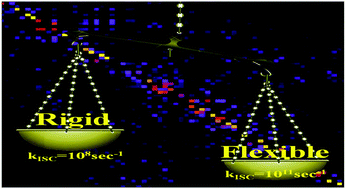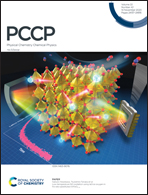The influence of spin–orbit coupling, Duschinsky rotation and displacement vector on the rate of intersystem crossing of benzophenone and its fused analog fluorenone: a time dependent correlation function based approach†
Abstract
To understand the effect of structural rigidity or flexibility on the intersystem crossing rate, herein we have adopted a time dependent correlation function based approach, an appropriate method for a harmonic oscillator under Condon approximation. Following this technique, we have developed generalized codes for calculating the rate of intersystem crossing (ISC) both at 0 K and at finite temperature. Since the rate of ISC is a measurable quantity, we have separated the real and imaginary parts of the complex correlation function carefully and eliminated the imaginary part by exploiting the odd nature of this function. Using this simplified method, we have calculated the ISC rate constant (kISC) of two molecules, namely, benzophenone and its fused analog, fluorenone. The calculations clearly elucidate that kISC of benzophenone is 103 times larger compared to that of fluorenone. Interestingly, our analyses reveal that the combined effect of spin–orbit coupling and the number of normal modes could increase the rate of ISC of benzophenone by three orders in comparison to that of fluorenone. Furthermore, the Duschinsky rotation matrix (J) and displacement vectors (D) could influence the rate of ISC by one order each, indicating that the overall rate of ISC of benzophenone could have been 105 times higher than that of fluorenone if the latter two factors, namely, J and D have practically no impact on the rate of ISC of fluorenone. However, it has been found that albeit J can't alter the rate of ISC of fluorenone, D indeed can change the rate by two orders, thereby keeping the overall ratio of the rate of ISC of benzophenone and fluorenone as 103. The present study elucidates that none of the above mentioned factors alone can explain the relative rate of ISC of the studied systems; rather a complex interplay between all these factors makes the rate of ISC of benzophenone 103 times higher than that of fluorenone.



 Please wait while we load your content...
Please wait while we load your content...